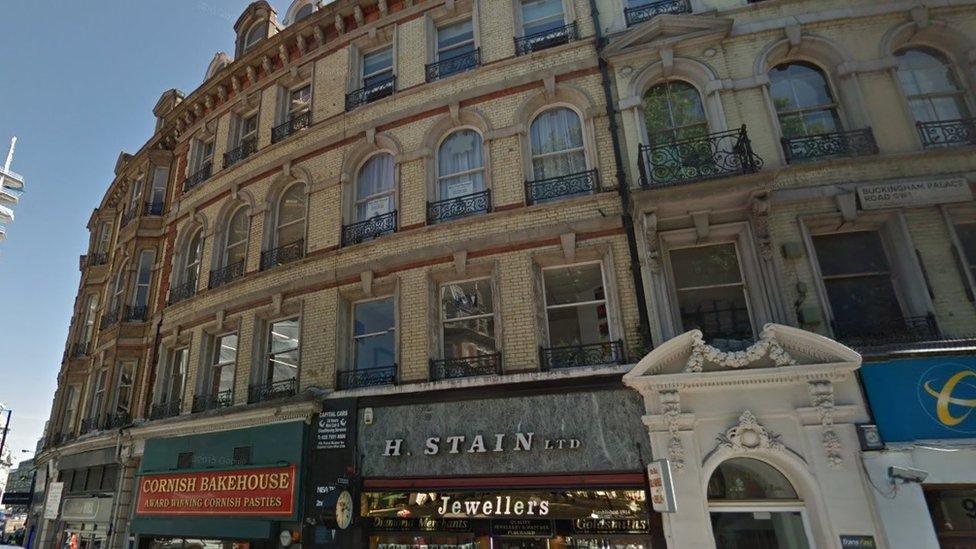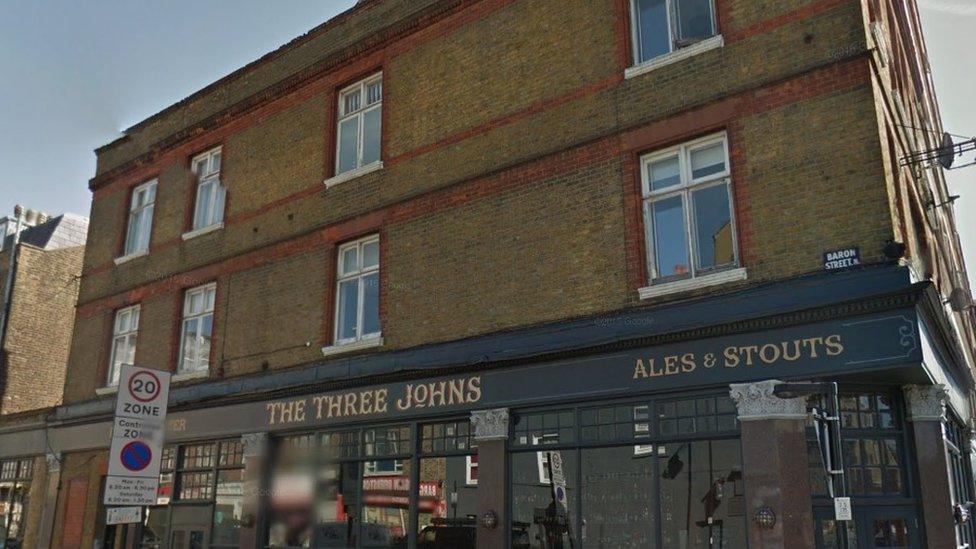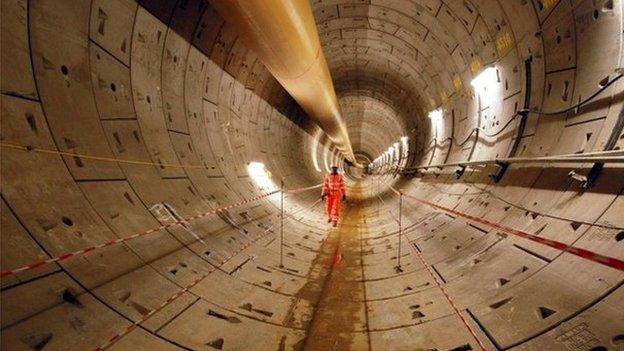Crossrail 2 'threatens' historic London buildings, say campaigners
- Published

This 19th-Century apartment building near Victoria is one of the sites which could be demolished
Historic buildings which have been part of central London since the 19th Century could be demolished to make way for Crossrail 2, according to heritage campaigners.
Transport for London (TfL) has proposed a new rail route running from north to south across much of the capital.
The Victorian Society has raised concerns the plans "would see numerous historic buildings demolished".
A TfL spokeswoman said demolition was "always our last resort".
The sites identified as at risk by the group include several Grade II-listed buildings dating back to the 18th and 19th centuries, and part of Angel station in Islington, which was built in 1902.

London's 'at risk' sites
Victoria: A late 19th Century hotel/apartment building which curves along Victoria Street and Buckingham Palace Road and includes the Shakespeare pub
Tottenham Court Road: A Grade II-listed 1909 building designed by well-known architect H Percy Adams on the corner of Rathbone Place and Oxford Street, and the "unlisted but handsome" Black Horse pub
Wimbledon: A Victorian block containing the Prince of Wales pub, a former 17th Century coaching inn rebuilt in 1870; a Grade II-listed 1904 former fire station; and a 19th Century former church
Angel Islington: The locally listed Three Johns pub on White Lion Street, rebuilt in 1899-1901 for Watney Combe Reid & Co
Euston: An early 19th Century terrace including the Grade II-listed 64 Eversholt Street
Dalston: A block of Victorian buildings including the locally listed NatWest Bank building of 1891 designed by architect Horace Cheston


This terrace near Euston dates back to the early 19th Century
The society's director, Christopher Costelloe, said: "Every effort must be made to use those sites which would minimise Crossrail 2's impact on London's unique and historic environment."
The group also criticised Crossrail 2's statement on how construction would affect London's heritage, claiming it "almost entirely deals with the impact of ground settlement caused by tunnelling rather than minimising the demolition of historic buildings of quality".

Michèle Dix, TfL's managing director for Crossrail 2, insisted that in planning the route they had "looked to minimise the impact on local residents and communities as much as possible".
She pointed out that while some Victorian buildings are within the proposed Crossrail 2 construction area they may not necessarily be affected when works are carried out.

The Three Johns pub in Islington is at risk, the society said
She added: "Demolition is always our last resort and where buildings are needed we will try to ensure the façade is retained to maintain the character of the local area."
Permission has not yet been granted to build the railway, and members of the public can contribute to the consultation on the route until 8 January, external.
- Published27 November 2014

- Published28 October 2014
